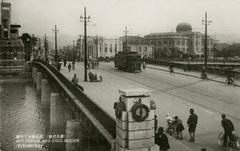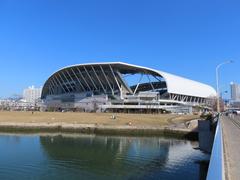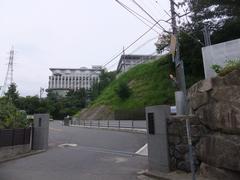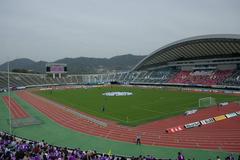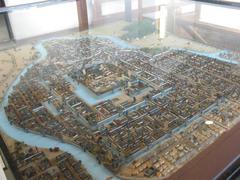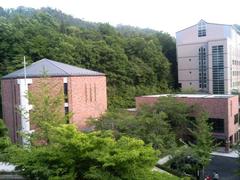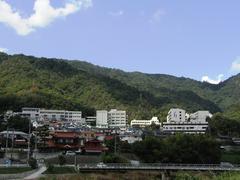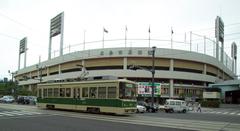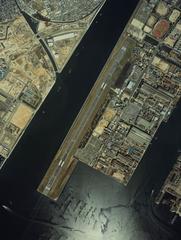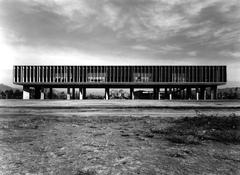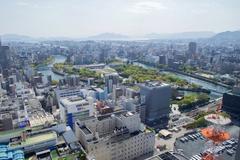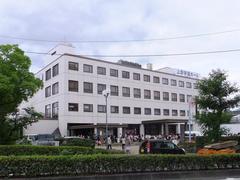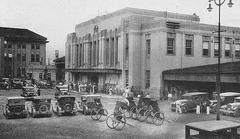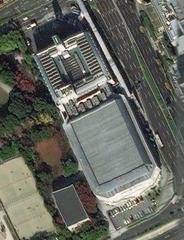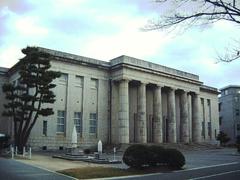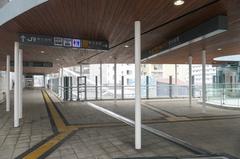Midorii Station Hiroshima: Visiting Hours, Tickets, and Local Attractions Guide
Date: 04/07/2025
Introduction: Midorii Station’s Role for Visitors
Nestled in the Midorii district of Asaminami Ward, Hiroshima, Midorii Station (緑井駅, Midorii-eki) serves as a critical gateway for travelers eager to explore Hiroshima’s rich cultural heritage and contemporary suburban life. As a key stop on the JR West Kabe Line, it provides direct connectivity from the quiet suburbs to central Hiroshima, linking passengers to essential historical landmarks such as the Hiroshima Peace Memorial Park, Hiroshima Castle, and Shukkeien Garden within a brief 15–20 minute train ride.
Beyond its function as a transportation hub, Midorii Station is immersed in a district with deep historical roots, stretching from prehistoric settlements to the transformative impact of Hiroshima Castle and subsequent urban development. Since its opening in 1909, the station has played a pivotal role in the area’s evolution from agricultural lands to a vibrant suburb, symbolizing both post-war recovery and modern growth. Visitors can also enjoy nearby natural settings, including the Asa mountains and Ota River, and experience cultural events like the Hatsutora Festival at Gongenzan Bishamondo temple.
This guide provides detailed information on Midorii Station’s visiting hours, ticketing, accessibility, and nearby attractions, as well as practical travel tips and insights into local customs. For up-to-date train schedules and ticket information, refer to the JR West website and the Hiroshima Peace Memorial Museum.
Quick Contents Overview
- Midorii Station Visiting Hours & Ticketing
- Accessibility & Facilities
- Historical Significance of Midorii
- Local Attractions & Cultural Highlights
- Guided Tours & Photographic Spots
- Practical Visitor Tips
- FAQ
- Transportation Access & Timetables
- Tickets & IC Card Usage
- Safety, Etiquette & Accessibility
- Plan Your Visit: Apps & Resources
- References & Official Links
Midorii Station Visiting Hours and Ticket Information
Midorii Station operates daily, with train services generally running from about 5:30 AM until midnight, in line with the JR Kabe Line schedule. While the station may be unstaffed during some hours, ticket vending machines remain accessible 24/7, supporting both single-ride tickets and major IC cards like ICOCA and Suica.
- Fares: Begin at approximately 150 yen, varying by destination.
- IC Cards: IC cards (ICOCA, Suica, etc.) offer convenience and minor discounts. Cards can be purchased and recharged at the station.
- [Purchasing Tickets: Use station vending machines or buy online through JR West’s official website.](#purchasing-tickets:-use-station-vending-machines-or-buy-online-through-jr-west’s-official-website.)
Accessibility and Facilities
Midorii Station prioritizes barrier-free access, featuring ramps, elevators, tactile paving, and accessible restrooms. Sheltered waiting areas, clear multilingual signage, and ticketing machines with language support make it user-friendly for international visitors and those with special needs.
- Connections: Local buses and taxis are readily available. Car rental services are accessible nearby for regional exploration.
- Amenities: Convenience stores, cafes, and shopping options like the Fuji Grand Midorii complex are within walking distance.
Historical Significance of the Midorii Area
The Midorii area reflects a rich tapestry of Hiroshima’s history—from prehistoric settlements to the influence of Hiroshima Castle (late 16th century). The opening of the Kabe Line in 1909 (and Midorii Station itself) marked a turning point, transforming a rural landscape into a bustling commuter suburb. Post-war reconstruction efforts further accelerated its urbanization, making Midorii a symbol of Hiroshima’s resilience (Dive Hiroshima).
Local Attractions and Cultural Highlights
- Hiroshima Peace Memorial Park & Museum: Easily accessible via the Kabe Line and a tram transfer at Hiroshima Station. The park and museum are essential for understanding the city’s history.
- Hiroshima Castle: A reconstructed castle showcasing samurai history.
- Shukkeien Garden: A historic landscaped garden, ideal for seasonal visits.
- Natural Spots: Asa mountains and Ota River, perfect for hiking, cycling, and seasonal photography.
- Cultural Events: The Hatsutora Festival at Gongenzan Bishamondo, a temple with over 950 years of history, is a local highlight (Dive Hiroshima).
- Shopping & Dining: Fuji Grand Midorii and Sun Mall offer local cuisine, including Hiroshima-style okonomiyaki.
Guided Tours and Photographic Spots
While Midorii Station itself is modest, its surroundings offer excellent photographic opportunities—especially during the cherry blossom season in spring or the vibrant foliage of autumn. Guided tours of Hiroshima often include Kabe Line stops; local agencies can provide details on customized tours.
Visitor Tips for Using Midorii Station
- Check Timetables: Visit the JR West website for current schedules.
- IC Card Use: ICOCA and Suica cards are accepted for seamless travel.
- Accessibility: Elevators and ramps are available; ask staff for assistance as needed.
- Etiquette: Maintain quiet on platforms and trains; queue in designated areas.
- Language: Multilingual ticket machines are available, but a translation app may be helpful (Two Wandering Soles).
- Cash: While IC cards are widely accepted, carry some cash for small shops (Creator Economy).
Frequently Asked Questions (FAQ)
Q: What are Midorii Station’s operating hours?
A: The station supports services from approximately 5:30 AM to midnight daily, with 24/7 access to ticket machines.
Q: How do I purchase tickets?
A: Use on-site vending machines or buy via the JR West online platform. IC cards are highly recommended.
Q: Is the station wheelchair accessible?
A: Yes, with elevators, ramps, and accessible restrooms.
Q: Are there guided tours from Midorii Station?
A: While no tours originate at the station, many Hiroshima tours include the Kabe Line; inquire with local travel agencies.
Q: What are the main attractions near Midorii Station?
A: Hiroshima Peace Memorial Park, Hiroshima Castle, Shukkeien Garden, Gongenzan Bishamondo, and natural sites along the Kabe Line.
Access and Transportation: Getting to and from Midorii Station
- JR Kabe Line: Connects Midorii Station to Hiroshima Station in 15–20 minutes. Trains run every 15–20 minutes during peak hours.
- Transfers: From Hiroshima Station, access Shinkansen, trams, and buses reaching Hiroshima’s major sites.
- First/Last Trains: First from Hiroshima around 5:30 AM; last service around midnight.
Useful Links:
Tickets & IC Card Usage
- IC Cards: ICOCA, Suica, and most major IC cards accepted for trains, trams, and buses.
- JR Pass: Japan Rail Pass holders can use the Kabe Line, including Midorii Station, at no extra cost.
- Regional Passes: Available at ticket offices for broader area access.
Safety, Etiquette & Accessibility
- Safety: Hiroshima is recognized for its cleanliness and security; Midorii Station is well-lit and regularly patrolled.
- Etiquette: Keep conversations quiet, silence phones, and follow queuing protocols.
- Accessibility: Barrier-free features support travelers of all ages and abilities.
Plan Your Visit & Stay Connected
Enhance your journey by downloading the Audiala app for live schedules, alerts, and local guides. Engage with our travel community on social media for the latest updates and insider tips. For in-depth planning and official details, always refer to JR West and Hiroshima Tourism Guide.
References and Official Links
- This guide incorporates insights from the following resources:
JR West Official Website
Dive Hiroshima
Hiroshima Peace Memorial Museum
Hiroshima Tourism Guide
Trip to Japan - Getting Around Hiroshima
JP Rail - Hiroshima Station Guide
Joy in Hiroshima - Transportation Guide
Nomadic Matt - Hiroshima Travel Tips
Hiroshima Prefecture Official Tourism
Japan Highlights
Creator Economy
Two Wandering Soles
Summary: Key Visitor Information
Midorii Station is more than a transit stop—it’s a well-equipped gateway to Hiroshima’s historical and cultural treasures. Its modern amenities, accessibility, and proximity to major sites make it ideal for both local commuters and travelers. Take advantage of IC cards for seamless travel, plan visits around festivals for deeper cultural immersion, and use official resources for a rewarding, well-prepared experience.
For more travel inspiration and the latest updates, follow Audiala on social media and explore our related guides to rail travel and Japanese culture. Begin your Hiroshima adventure with confidence via JR West and the Hiroshima Tourism Guide.
